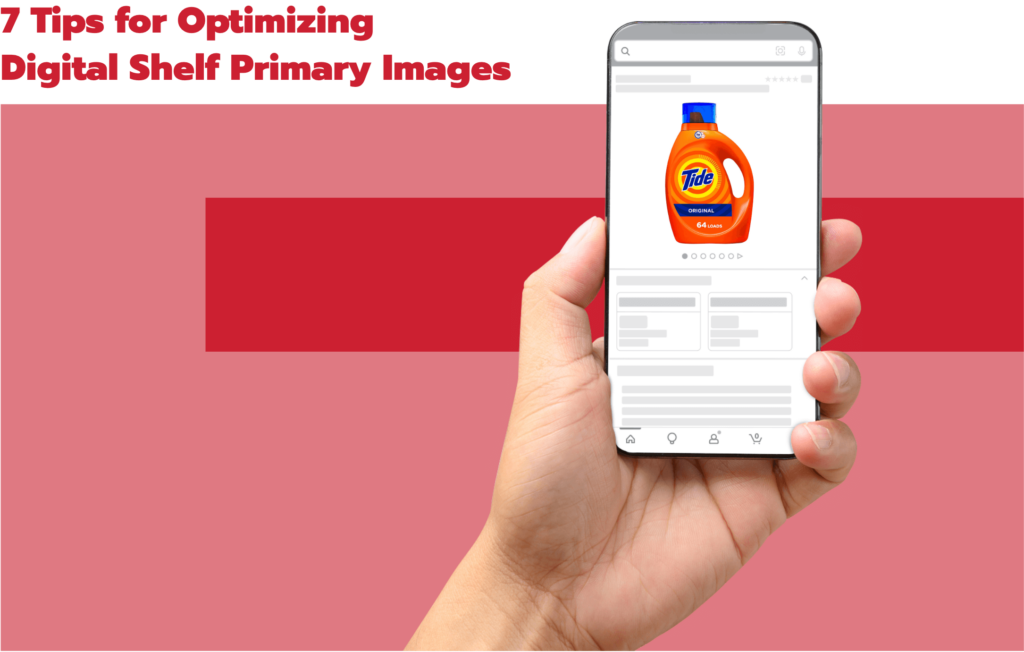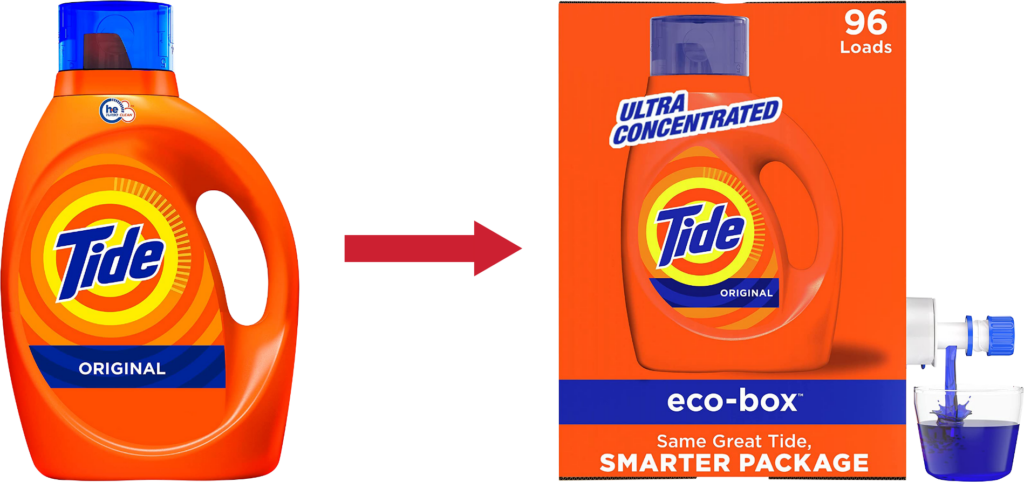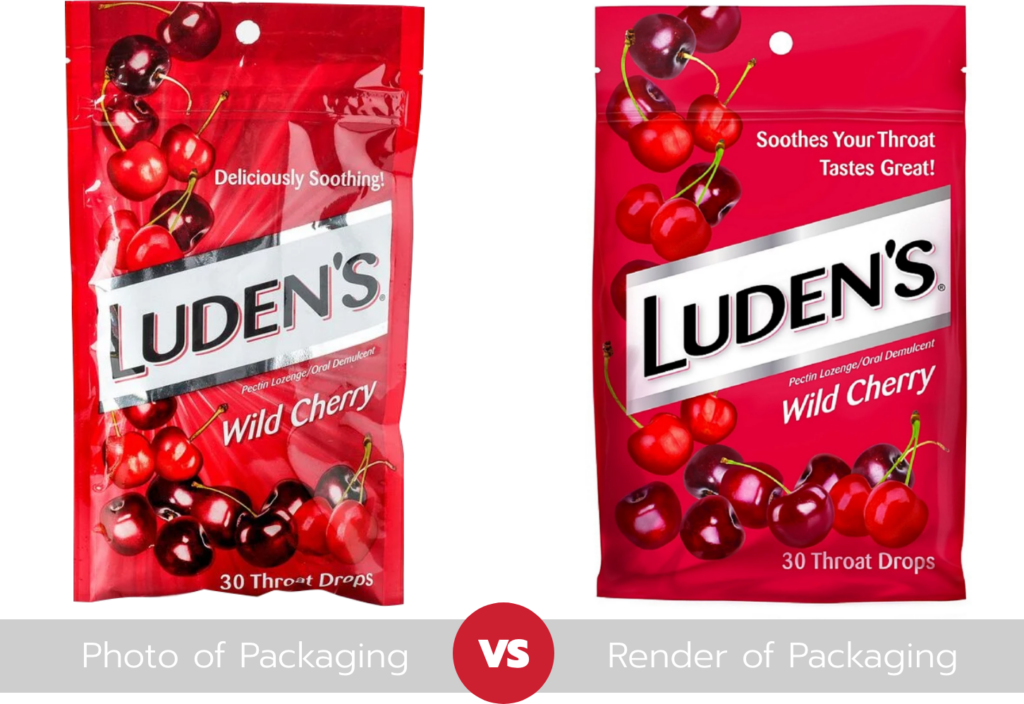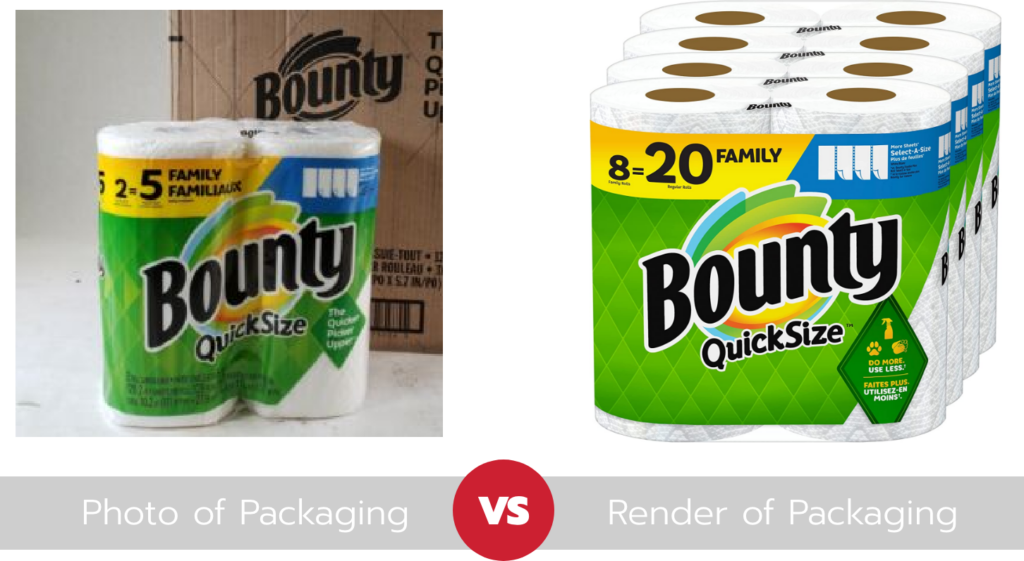
It may be time to rethink the effectiveness of your product’s packaging on the digital shelf. Optimizing product pages on eCommerce sites, otherwise known as Product Detail Pages (PDPs), is reliant on the product’s hero image. This can be an ambitious process as best practices are distinct from the physical shelf.
Traditionally, packaging design would favor the in-store consumer. That said, packaging also has a big impact on the eRetail shopping experience and can hinder “glance view” conversion. It takes less than a second for shoppers to scroll past your PDP on search. Our insight can help direct shopper’s attention to your PDP and improve conversion. Here are seven tips to optimize packaging or hero images for eCommerce PDP, without compromising the in-store experience.
- Be Seen! Leverage Contrast.
White packaging on white search screens is white noise to the consumer. This design fails to command attention and ultimately generates less conversion. Bold-colored contrasting packaging against a white screen makes your product stand out among competitors.
2. Mobile First Mentality.
Are the product’s primary claims unreadable for mobile users? If so, they might as well not exist. Less content is more when it comes to design for mobile experience. Excessive information becomes difficult to read on smaller screens. Scrap less relevant package copy. Instead, enlarge and emphasize key differentiators. Such as, branding, sizing, key search terms, and primary product claims. Ensure that special real estate is effectively utilized on the front of packaging.
3. Play Nice with Legal.
Many brands are rethinking which legal claims make the hero image of a PDP. Brand teams like Oscar Meyer, Brawny, and Gain, are removing traditional legal-based copy and icons from the front of pack for the PDP experience. Legal claims are still featured under PDP other attributes, back of pack, and on the physical package. Removing legal messaging from the hero image reduces noise.
Ability to do this varies by product category, as some categories have specific requirements (i.e., health, children, food and beverage, and environmental products, to name a few). Consult the Federal Trade Commission (FTC) guidelines on digital advertising and your own Legal counsel for custom recommendations about excluding legal copy from PDP hero images.
4. Rethink the Physical Packaging
Consider the costs incurred during logistics and fulfillment for eCommerce. Amazon logistics, for example, calculates based on cubic square feet and weight. This means ANY empty space between packaging and product is money spent to move air, not your product. Products, like Tide’s Eco-Box, that ship in-package, are an effective use of space and logistics. Plus, they’re recyclable.

5. Scrap the Photo for a Rendering
We get it. Producing your own packaging shots is faster, easier, and may include CSP (content service provider) offerings. This can be handy when no content currently exists for the product. However, investing in digital rendering package print files will deliver better images. Digital renderings avoid imperfections like creases and lens glare, producing a more appealing image and better shopper experience.

Digital renderings also prompt best practices for optimizing claims and details that are otherwise missed opportunities. Featuring the product outside of the rendered package, along with mobile optimization tactics, increases appetite appeal, clarifies what the product is, and minimizes the visual noise tied to the packaging.

6. Test & Learn.
“Soft launch” and “packaging” don’t typically go hand in hand. That said, packaging on the digital shelf makes fast and lean alterations possible. Brands can use the digital space to test minor differences that result in semi-permanent physical packaging options. How to start? Begin by monitoring traffic changes for glance view KPIs on eCommerce retailer sites. If a mobile package rendering is not optimized, adjust the image, and watch the Glance View metric increase. The goal of the hero image is to spark ample interest and communicate a visual claim, motivating shoppers to click on your PDP to learn more.

 7. Push the Brand, Pull the Retailer.
7. Push the Brand, Pull the Retailer.
Most eRetailers are not advanced enough to pick up on subtle changes in mobile image optimization. Mobile image tags are used to identify and label the contents of an image. Retailers will flag them if they violate policy (Amazon). The other areas of mobile packaging improvement (listed above) not only improve the on-site shopper experience but fall under a gray area for the eRetailer, that are difficult to enforce. Besides, why would they want to regulate them when the outcome is better, clearer communication for shoppers that results in higher conversion rates?
Push the limitation on specifications, A/B test concepts, and share result with the retailer. eRetailer specs are constantly changing. The question is: do you want to be ahead of the curve or still “catching up?”
IRIS™ is an eCommerce assessment tool designed to track user views on Product Detail Pages (PDPs) and optimize eCommerce PDP presence. Brands are provided actionable feedback to improve content and increase conversion rates by up to 30%.
Learn about how IRIS can help assess and optimize your eCommerce PDP approach.
